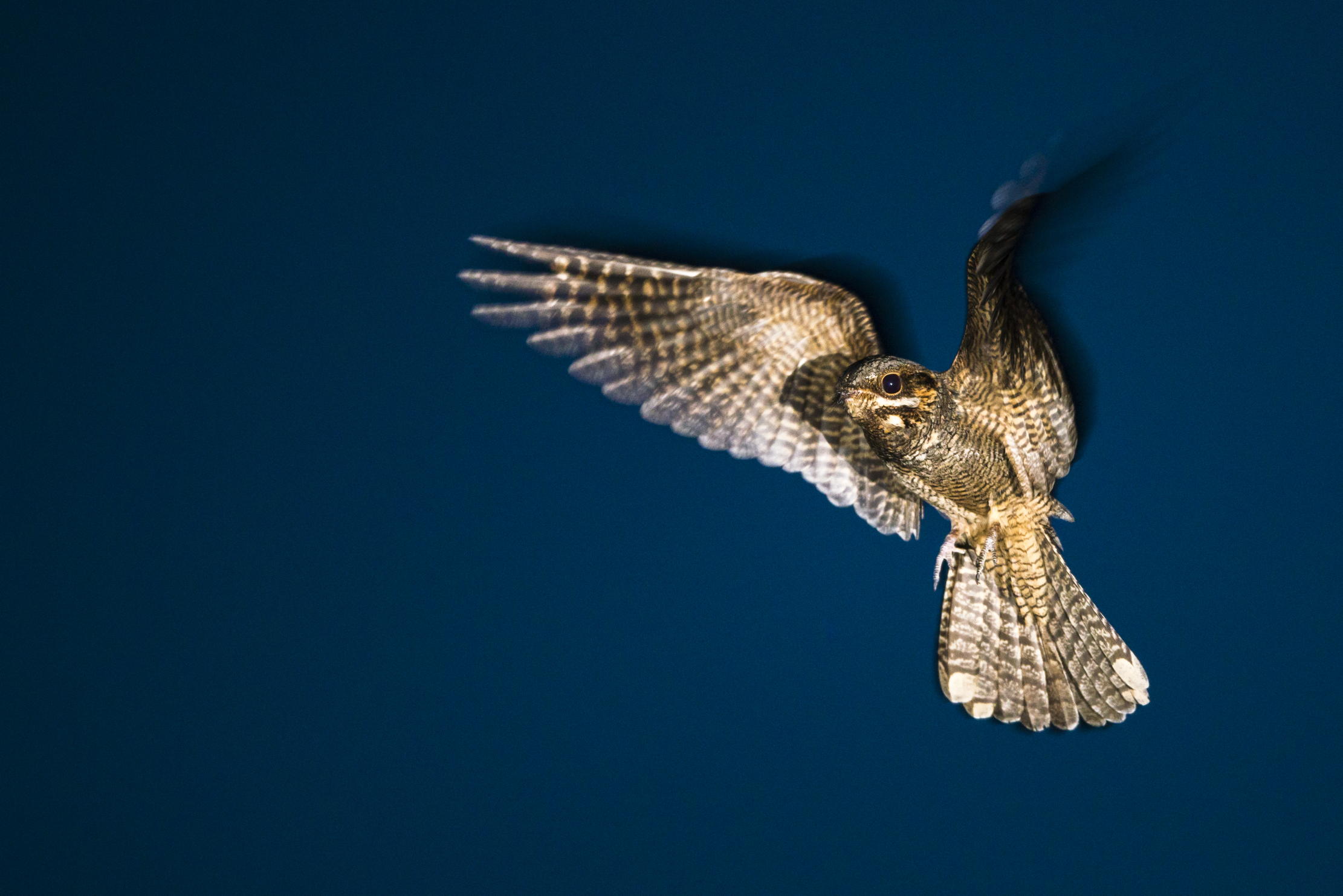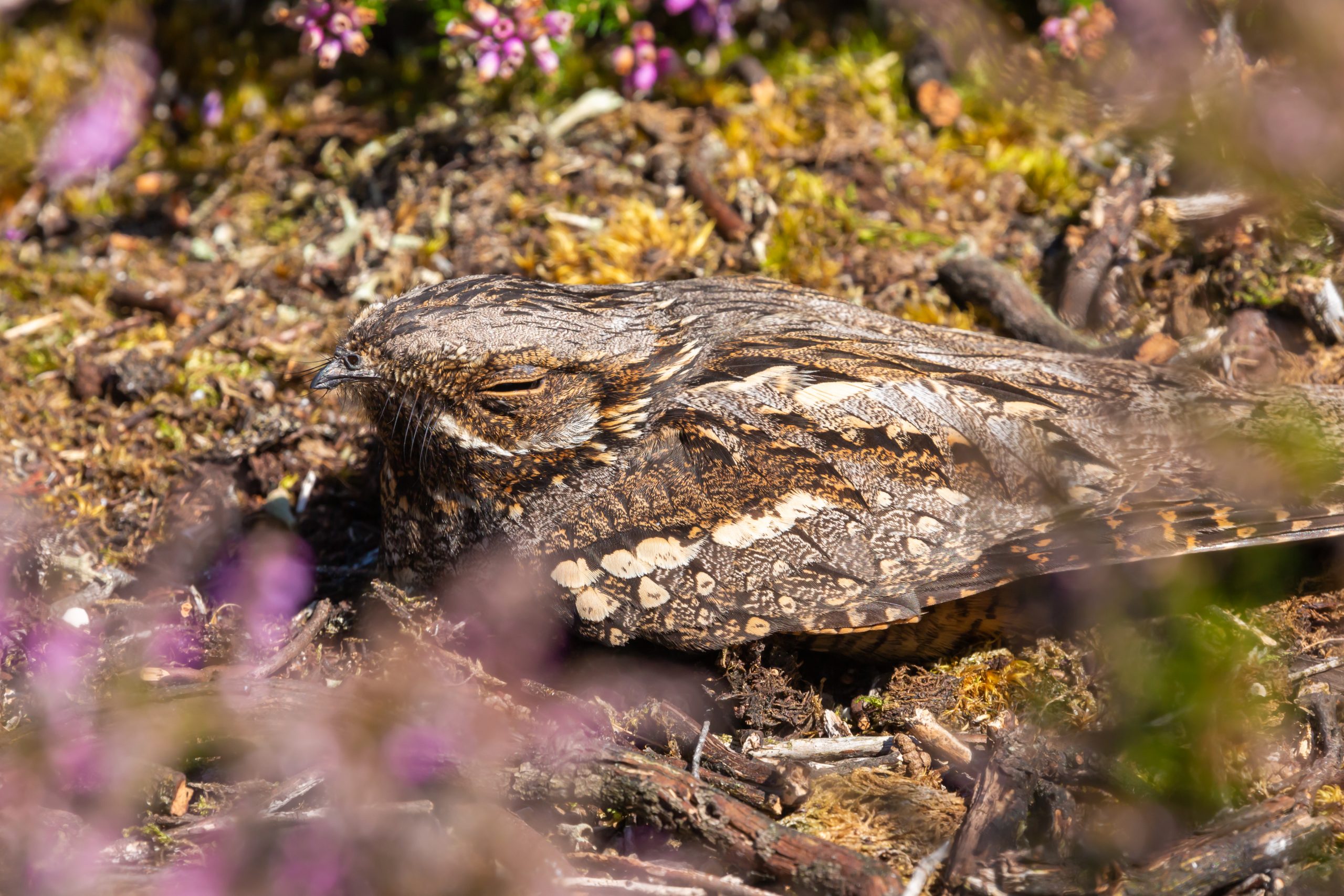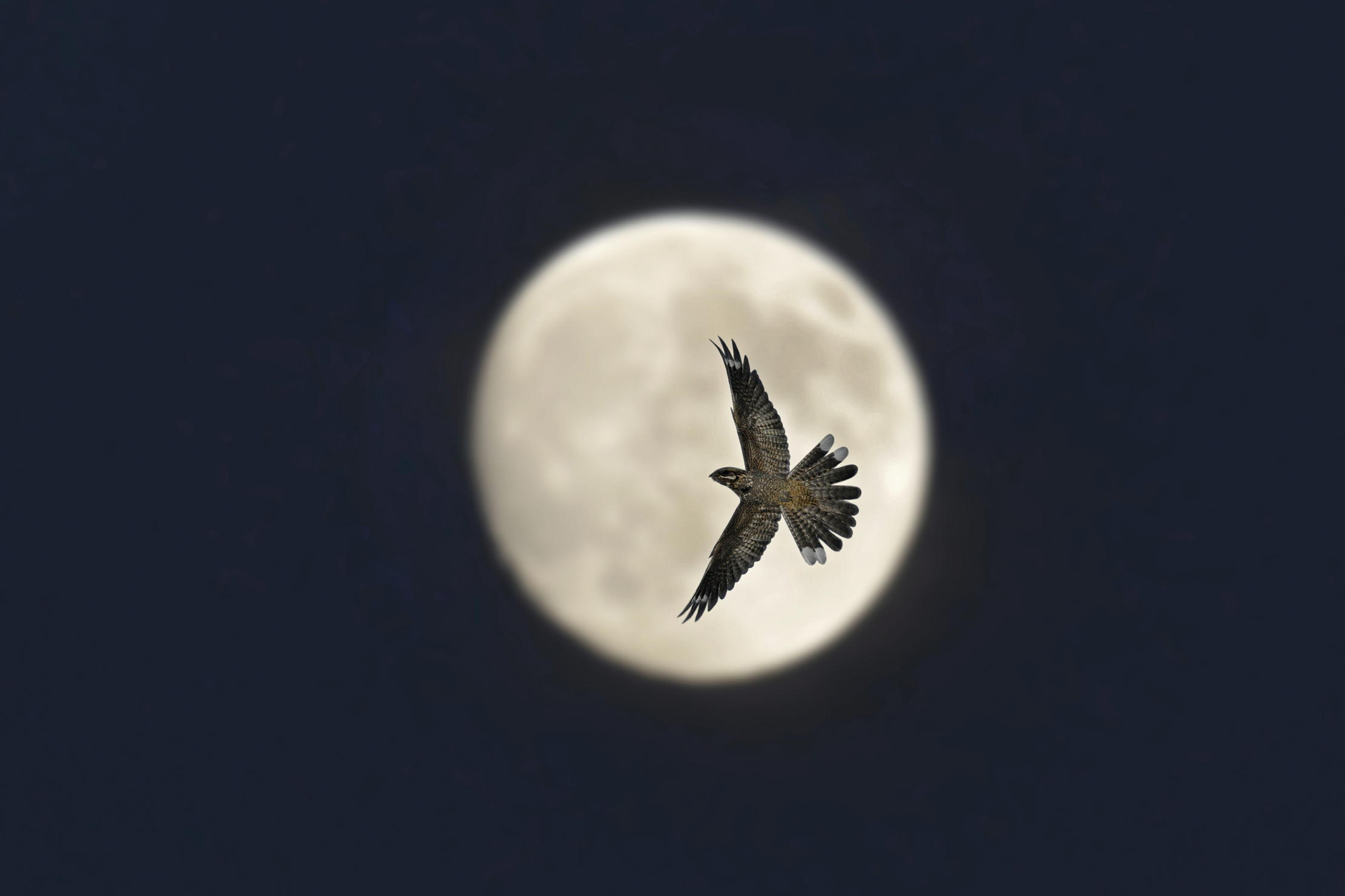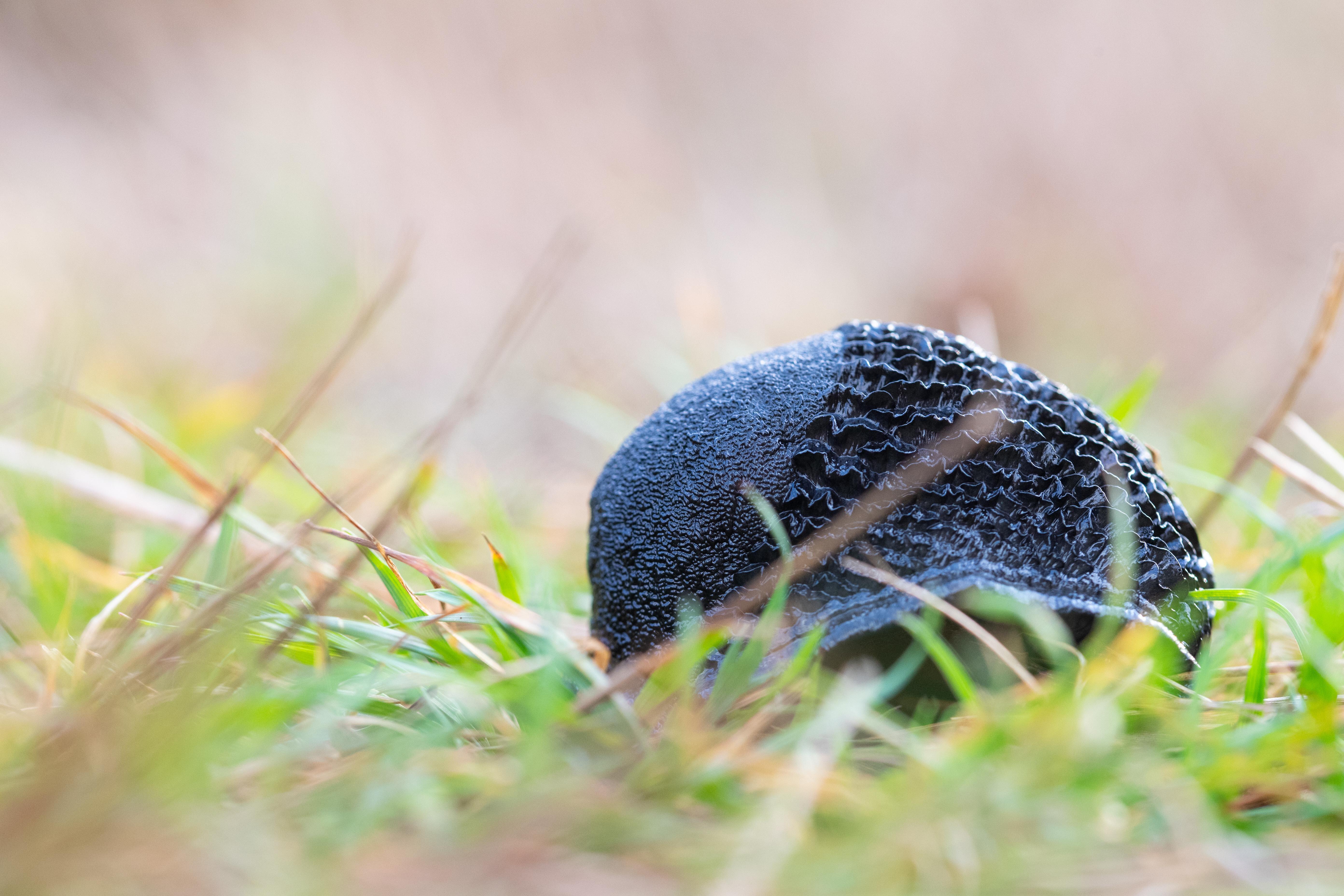Nightjars: The ventriloquist magicians of the bird world which sing 1,900 notes a minute
An early-morning foray in Dorset sees John Lewis-Stempel revelling in the antics of the nightjar or ‘fern owl’, the enigmatic crepuscular bird with a purr-like call.


The weary woodman rocking home beneath His tightly banded faggot wonders oft While crossing over the furze-crowded heath To hear the fern owl’s cry that whews aloft In circling whirls and often by his head Whizzes as quick as thought… — John Clare, from ‘The Fern Owl’s Nest’
The traffic had been unexpectedly kind and I had an hour or two to spare, so, as I was passing Poole, I took a detour to the RSPB reserve at Arne on the Isle of Purbeck. Well, I dispute the ‘Isle’, Purbeck being a peninsula. Culturally, however, I concede that Purbeck is island-like, isolated, pleasantly lost in the past, with its steam railway running to Swanage via a black-and-white Ealing film from the 1950s, St Trinian’s and Titfield request stops.
Anyway, after parking at the reserve, I walked up Hyde’s Heath, a prime bit of Dorset heathland overlooking Poole harbour, an arterial red sun to my back. The sandy earth was warm with summer; the heat in heath. The great, open expanse of heather was coming into pink bloom; the merged hues of sky and heath casting the scene in fire glow. On the evening air, the scent of wild herbs.
I’ve been to the heath on a summer’s eve before, so I knew the enchantments it would offer to the eyes, the multitudinous fairie moths, the fizzing stroboscopic adder on the track. I knew, too, the delight on the nose: the resinous twang of the discreet Scots pines distinct even above the massed floral heather and the spikes of gorse (John Clare’s ‘furze’), the latter having the spice of cloves and Bible tales.
The surprise is always the sound. The heathland summer acoustic is distinctly mechanical; the stridulation of the grasshoppers and crickets is the noise of 1,000 sewing machines at work. And everywhere the hazy drone of late working bees. Then, transmitted on the fragrant air, the distinct churring of a nightjar or ‘fern owl’. An unnatural, manufactured, repetitive tool-type sound, as suggested by numerous archaic common names for the crepuscular migrant bird: ‘scissor grinder’, ‘razor grinder’, ‘wheel bird’, ‘spinner’.
Actually, the only special ‘tool’ the nightjar possesses is its breathing system. Almost all bird species sing when exhaling, requiring pauses to inhale; the male nightjar has evolved to sing continuously, altering amplitude and pitch to inhale as it emits 1,900 notes a minute. My ears accustomed, I discerned that late evening two nightjars calling, although the sound seemed to surround me.
This was not purely my imagining. Nightjars are ventriloquists, the males swivelling their heads as they purr, so their song pours down their backs and swirls upon itself. Ventriloquism in birdsong is defence, the purpose to deceive predators as to the location of the singer that is perched in the open, the nightjar preoccupied with performance of his chanson.

The nightjar is magician multiplied. By day, the bird lies camouflaged in its vermiculated greys, browns, blacks, speckled white and gold; a physical mimicry of the tree bough it rests upon, pressing itself down, closing its large liquid eyes save for narrow tank slits through which they keep watch. They lie lengthways, ‘closing up’ in a rare phrase of ornithological poetry. As the sun moves, so they shift minutely, always facing the sun to minimise shadow.
Exquisite houses, the beauty of Nature, and how to get the most from your life, straight to your inbox.
As nightjars hunt visually, they need some light in the sky, against which their insect prey can be silhouetted; so twilight or moonlight. As are most summer avian migrants, Caprimulgus europaeus is determinedly carnivorous, aerial insects its diet. The mouth of the nightjar is wide, gaping, openable on two planes, vertical and horizontal, fringed by bill bristles that funnel cruelly the prey into the mouth trap (moth trap). Moths comprise the bulk of the nightjar’s prey species, with beetles and true flies also significant. The nightjar is celebrated for its weird purr-call, but its moth-chasing aerobatics merit mention.
One of the nightjars presented itself for my delight, swinging in around a lone pine before describing hawk-like sines and cosines, tangents and arcs against the red band of the western horizon. Then a dead stop mid air, every wing and tail feather air-braking. A spin on the centre of its own spine, a slow flutter. Bat-like in the dimness, its wings stirred the heathland potpourri.
I could watch and hear nightjars until the cows come home, which, in a sense, I do when staying in south-west France. We have nightjars there, too, in La Charente, where the bird assumes a non-heathland guise, although one once familiar in England and the whole of Europe. There, it is the ‘goatsucker’ or, in Latin, Caprimulgus. The nightjars of the Charente inhabit woodland glades, but also hunt the barns and cow fields, flickering around the sculptures of sleeping Limousin cattle.
The nightjars occupy the night space taken by swallows in daytime (‘night swallow’, indeed, being yet another old country name for the bird). Their elective affinity for the nocturnal farmyard gave rise in the past to all sorts of superstitions, notably that the bird syphoned milk, such as that of goats. The nightjar, of course, is not a milk-snatcher, but a feaster on insects. It’s estimated that more than 40% of all insect species across Western Europe are in decline, but where there is (especially organic) muck, there are insects. Lucky are the nightjars at Arne, where the RSPB, in one of its more enlightened moments, facilitates grazing by farm animals: cattle, ponies, pigs.
According to B. R. Laurence’s pioneering 1954 study The Larval Inhabitants of Cow Pats, a single, average cow defecation develops 1,000 insects — which is rather useful, if you are a nightjar consuming 1,000 insects daily. Livestock and nightjars. They go together like… livestock and nightjars. The people of the past, in calling the nightjar ‘goat-sucker’, understood the life-giving connection between farm beast and bird. They merely got wrong which bit of the beast the nightjar was interested in.
Twice crowned victor of the Wainwright Prize for Nature writing, for ‘Where Poppies Blow’ and ‘Meadowland’, John Lewis-Stempel’s latest book, ‘La Vie: A year in rural France’, is out now in paperback (Penguin, £9.99)

On the night watch: The lives of Britain's nocturnal creatures
As the diurnal delights of the animal kingdom slip into a deep slumber, John Lewis-Stempel explores the velvety black shadows

Mind your step: The world's biggest slugs are alive, well and thriving in England
Prowl the wilds of Dartmoor at night and you just might stumble upon Limax cinereoniger, the world's largest land slug.

Hibernation: How it works, why animals do it, and the creature that can sleep for up to 11 months
Dormice sleep for months, hedgehogs snore in quilts of moss and wood frogs turn to ice — a spellbound John Lewis-Stempel

'Trees remind us of our insignificance, our transience, and the necessity of wonder'
As Country Life launches its Trees for Tomorrow campaign, to mark the magazine’s 125th anniversary, John Lewis-Stempel reflects on why

The 8 best birdsongs you'll hear in Britain
Which eight birdsongs would you choose as the soundtrack if you were stranded on a desert island? David Tomlinson picks
